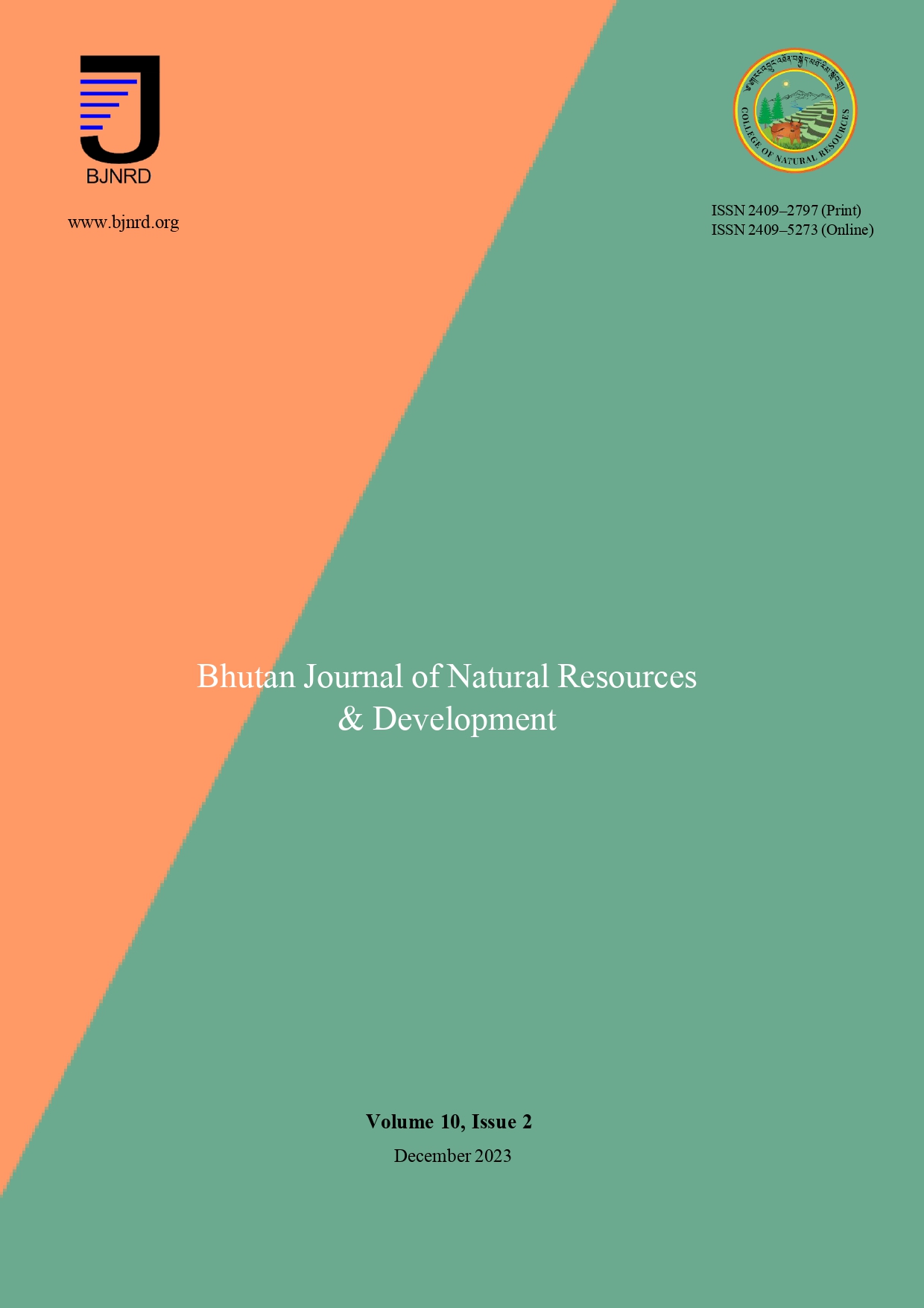Freshwater Metacommunity Structure of Suchhu River, Haa District, Bhutan
Abstract
Bhutan is endowed with rich river systems which inhabit a multitude of aquatic species. However, the increasing developmental activities, urbanization, rural-urban migration, growing water demand, and land use alterations pose substantial risks and imminent threats to freshwater biodiversity. The study aimed to evaluate the diversity and spatial distribution of fish and benthic macroinvertebrates in Suchhu river, Haa. Data collection for the study was conducted during the monsoon and post-monsoon seasons, in July and October of 2021. The data collection followed a systematic random sampling, with samples collected at 1 kilometre intervals spanning 30 sampling stretches, each measuring 200 metres in length. Overall, a total of 632 fishes were encountered belonging to 8 species under 3 families from 30 sampling stretches. The overall fish species diversity in the river was H’= 0.68, species evenness EH = 0.33, and species richness SR = 2.50. Concomitantly, a total of 265 samples of macroinvertebrates were collected belonging to 10 families under 8 orders. A total of 10 species were recorded and the species diversity for macroinvertebrates was found to be H’= 1.73, species evenness EH = 1.57 and species richness SR = 0.83. A total of 13 species (9 phytoplankton and 4 zooplankton) under 9 families and 9 orders were recorded. The species diversity was found to be H’ = 1.68, species evenness EH = 0.65 and species richness SR= 4.54. The study emphasizes addressing environmental impacts from development, urbanization, and land use changes to protect freshwater biodiversity. Analyzing fish and macroinvertebrate metacommunity structure enhances our understanding of ecological consequences, promoting freshwater ecosystem sustainability.




